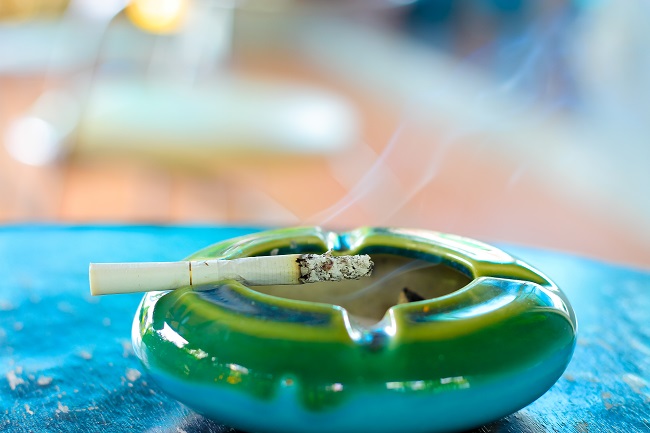Tobacco sales ban near schools cuts licensed shops by 70 per cent
Published: 5 November 2020
Banning the sale of cigarettes close to schools and playgrounds would reduce the number of shops allowed to sell tobacco products in Scotland by more than 70 per cent
Banning the sale of cigarettes close to schools and playgrounds would reduce the number of shops allowed to sell tobacco products in Scotland by more than 70 per cent, a study suggests.

Preventing tobacco sales within 300 metres of children’s spaces would greatly reduce availability, and could aid efforts to prevent young people taking up smoking, researchers say.
A team from the Universities of Edinburgh and Glasgow examined ways of reducing the number of places where people can buy tobacco products in Scotland.
Researchers created digital maps of all the country’s registered tobacco retailers – of which there are more than 9,000 – and simulated how different policies would alter the number of outlets.
The report also looked at how new approaches might affect existing inequalities in tobacco availability. Previous work has shown that Scotland’s most deprived areas have more shops selling tobacco per head of population than wealthier areas.
The team studied the impact of regulating the type of shops allowed to sell tobacco, or where it can be sold. Researchers also looked at the effects of introducing caps on numbers of retailers in certain areas.
The findings show that, as well as blocking sales near children’s spaces, several measures could lower the number and density of outlets and reduce inequalities in availability. These include stopping sales in small local shops – where tobacco products are most often bought – or restricting sales to supermarkets only.
However, some measures to reduce tobacco retailers could increase inequalities in availability, researchers found. For instance, limiting sales to off-licences would increase inequalities in availability because deprived areas tend to have more of these shops than wealthier neighbourhoods.
Earlier work by the team showed that children in Scotland’s most economically deprived neighbourhoods spend more time in or near shops selling tobacco than those from less deprived areas. The team also previously revealed that teenagers are more likely to smoke if they live in neighbourhoods with a large number of tobacco retailers.
Lead author of this study Dr Fiona Caryl, of the University of Glasgow, said: “Measures to reduce tobacco availability should form part of the Scottish Government’s efforts to create a tobacco-free generation by 2034. However, it is important to understand which policies would be most effective while ensuring social inequalities aren’t being exacerbated.”
Professor Niamh Shortt, of the University of Edinburgh’s School of GeoSciences, and Principal Investigator on the project, said: “We need to identify ways to reduce smoking rates, particularly in young people, the most recent data shows us that smoking rates in young people have levelled off and are no longer falling. One way to address this is to reduce the number of retailers permitted to sell tobacco. We do not need to sell known cancer-causing products alongside everyday products like bread and milk.”
The study, published in the journal Tobacco Control, was funded by Cancer Research UK.
Enquiries: ali.howard@glasgow.ac.uk or elizabeth.mcmeekin@glasgow.ac.uk / 0141 330 6557 or 0141 330 4831
First published: 5 November 2020
<< November

